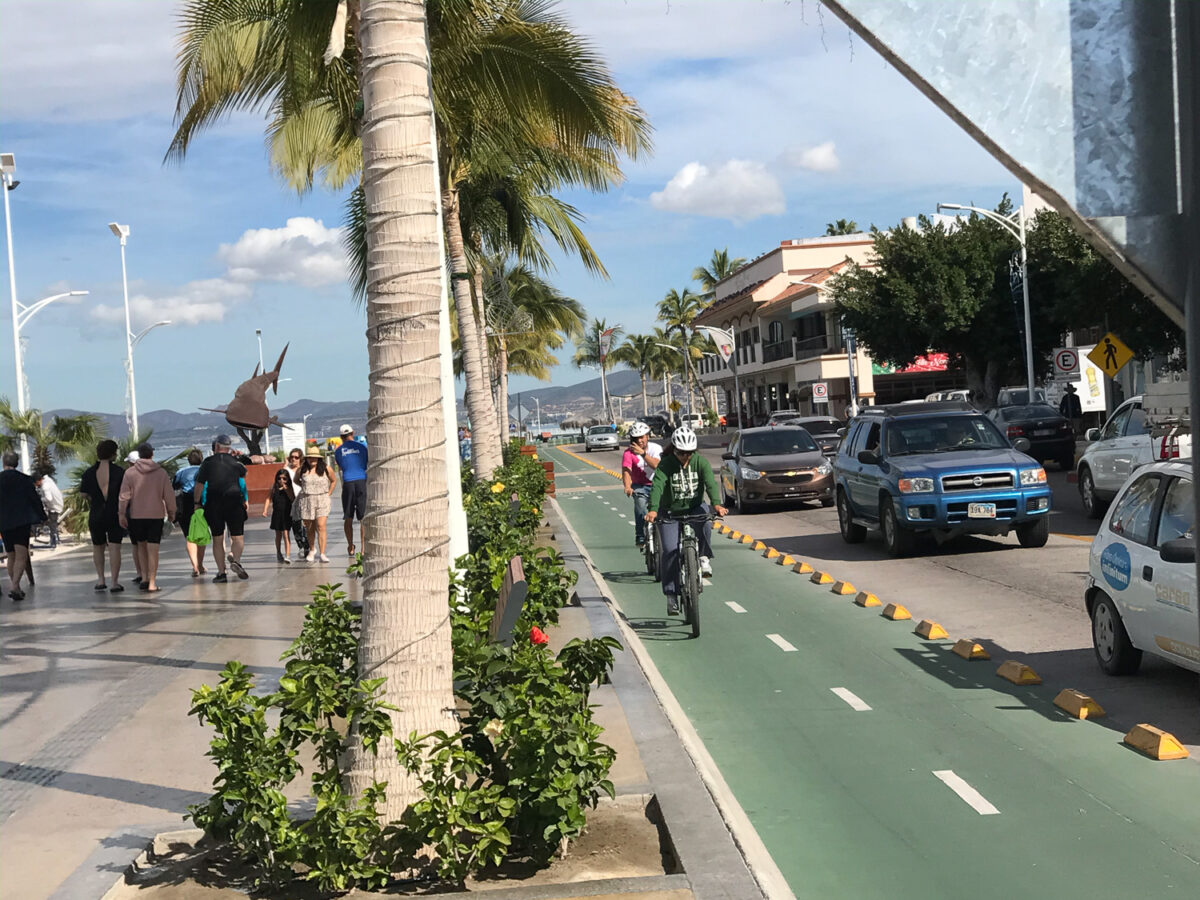
(Photos © J. Maus/BikePortland)
I try to not think about work while on vacation, but I couldn’t help think of Better Naito and Waterfront Park while I was in La Paz, Mexico with family over winter break. The reason? A dreamy piece of public space known as the Malecón.
The Malecón (English for promenade or sea wall), is a three-mile stretch of Paseo Alvaro Obregon along the edge the bustling city of 250,000 in Baja California Sur 90 miles north of Cabo San Lucas. On a map the Malecón separates La Paz’s downtown and commercial zone from the Bay of La Paz and Sea of Cortez, but in real life the space brings the city together. During our week there it was full of life everyday and became my favorite place to hang out. It’s easily one of the best examples of human-centered seaside infrastructure I’ve ever experienced.
Held up against Waterfront Park and Naito Parkway, there’s really no comparison. Here’s why:
It’s safe and family-friendly
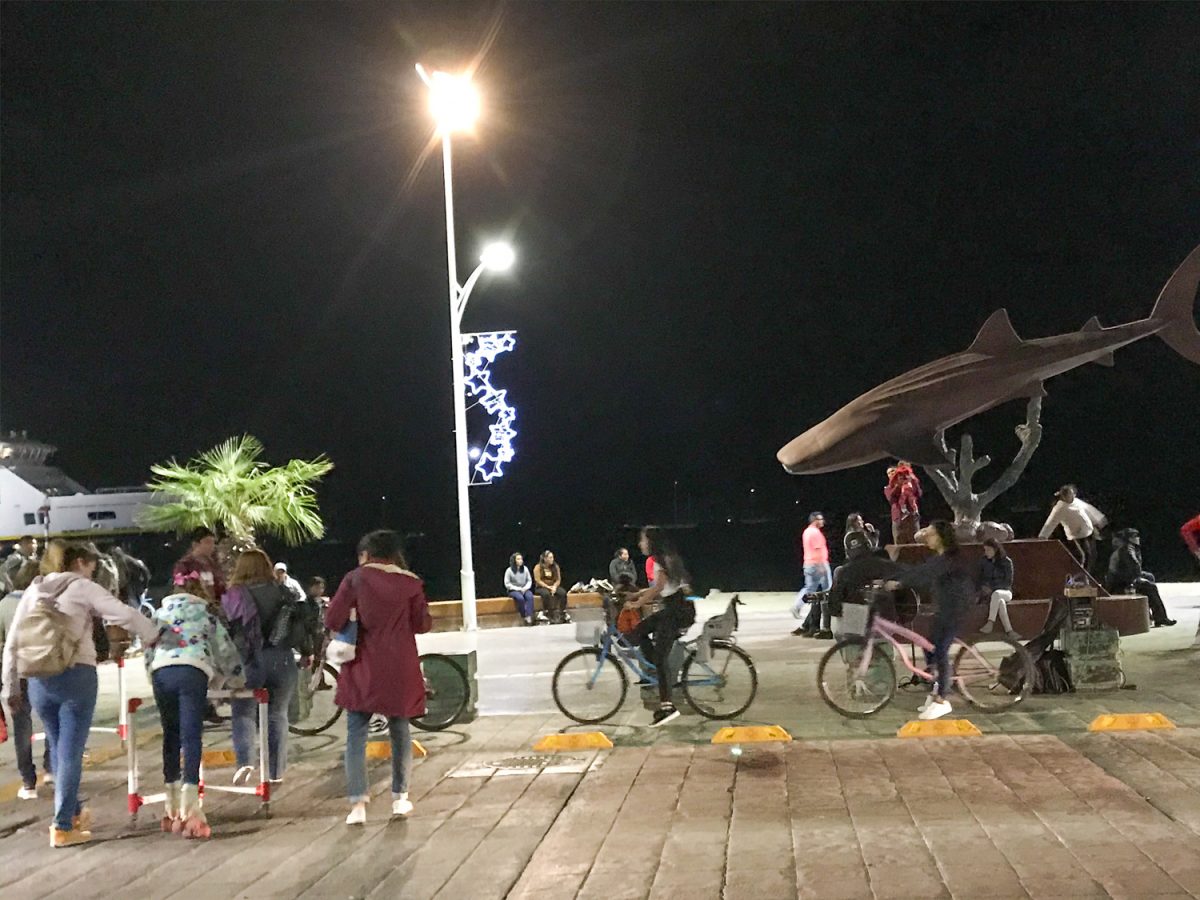
Carfree spaces are the goal, but when you can tame the speed of drivers to 15 mph and below, every public space becomes 100% better. And guess what, where people don’t threaten others with big and dangerous vehicles, families soon follow. I was overjoyed to see so many people of different ages and statures on the boardwalk and bikeway. Multiple generations of families walking hand-in-hand, tiny kids being taught how to ride with an elder by their side, teenagers roller-blading and skateboarding, young couples in love.
Unlike Naito Parkway, drivers on the Malecón rarely if ever go above 15 mph. Usually it’s even slower than that because it’s more of a place to cruise.
Advertisement
Beyond safe traffic, the Malecón is an inviting place because it’s very well-lit and there are many programmed spaces that feel welcoming at all hours of the night. There are almost 200 benches, lots of little niches to claim, and spots where you can choose to be on display or have privacy.
In constrast, Waterfront Park is separated from downtown by a wide, multi-lane road where people routinely drive well over safe speeds. The park itself is mostly just grass and darkness that — outside of Portland Saturday Market and large festivals in the summer — can feel scary and uninviting at night.
The materials and finish are world-class
In the last 10 years the Mexican government has made significant investments in the surfaces and furnishings. They recently replaced tile pavers with a polished concrete surface that looks great and feels luxuriously smooth. On October 2019 they had a big celebration to toast the latest $10 million in upgrades that included new plazas, lighting, a grand gazebo, intriguing sculptures, and more.
Everything feels and looks top-notch, which tells users that the space is respected. I find that when people feel spaces are built with respect for their experience, they respect the spaces more.
One of the coolest spaces is at the Malecón’s northern end. A BMX park has been built in the middle of the street with bikeways running along either side.
Proximity
While drivers and their cars are still more present than I’d hope (idling pickups next to the ice cream shop’s tables is no fun), the proximity between the boardwalk and the city itself felt wonderful. In Portland, I feel like Waterfront Park is so far away from “downtown” because of the way we’ve allowed development to happen along (and on) Naito Parkway.
Advertisement
And as much as I love Better Naito for its carfree cycling space, it’s separated from other people walking on the riverfront path. If there’s one rule of public space design, it’s that people crave proximity to other people (even if they don’t admit it). I’d rather see bicycle riders adjacent to walkers (with ample separation through design of course) than car drivers.
Teeming with life
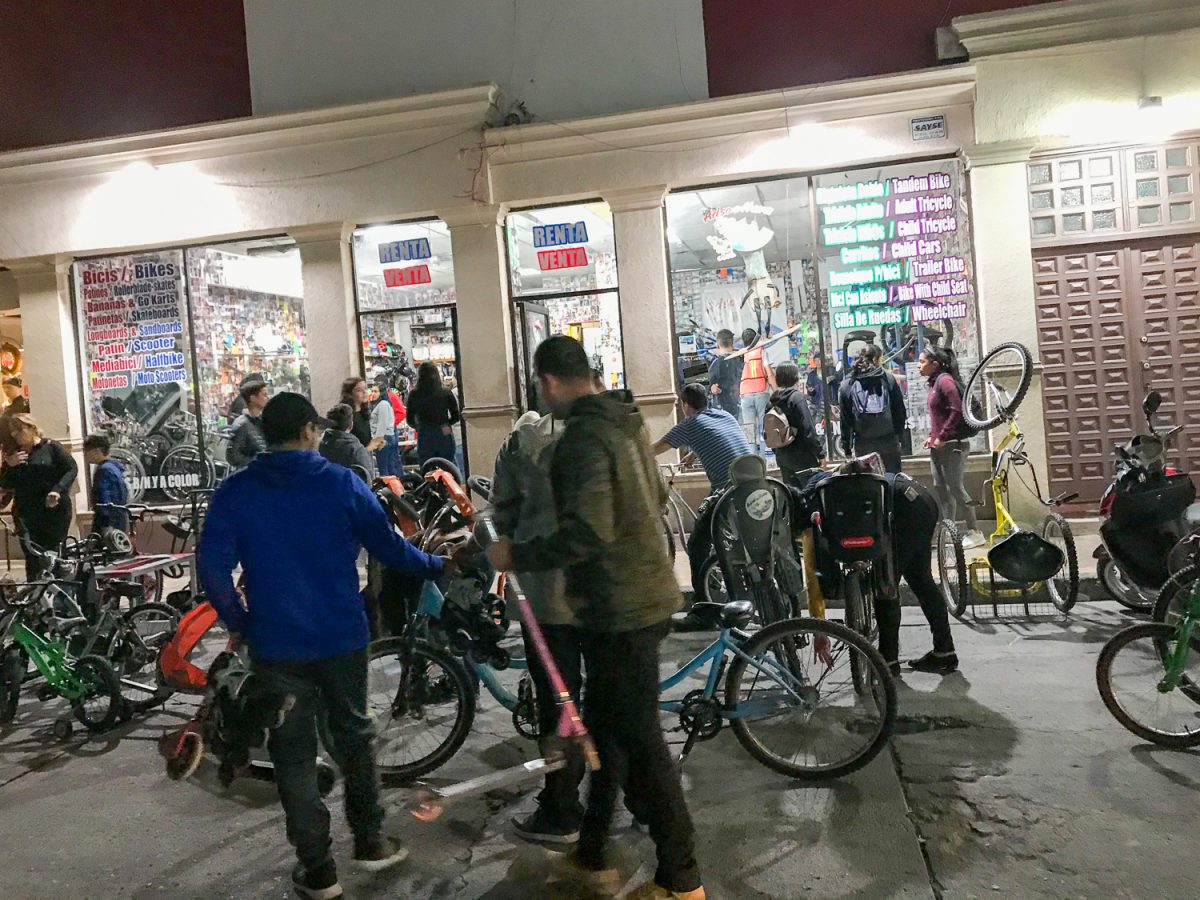
Portland has a lot of planning goals. We should add another one: An ideal number of people in major public parks and spaces. It was so exciting to be at the Malecón at night. One time on a clear and warm evening it was just packed with people (in a good way). One one block just off the boardwalk we came to a storefront that was abuzz with activity. There were bikes and people on them everywhere so I instantly perked up. I thought maybe a huge, critical mass type ride was starting. Turned out to be a rental shop that was mobbed with customers. From bikes to trikes to skates and scooters, people were grabbing anything they could find that had wheels on it. There was a palpable eagerness to hit that smooth concrete and get rolling on the Malecón ASAP!
The bikeway design
The bikeway isn’t as wide as it should be, but it works for now. It’s a two-way path, painted green with yellow curbs separating it from auto users. To give you an idea of how much pride La Paz residents have in it, every morning I would see work crews sweeping sand out of the bike lane by hand.
Toward the northern end of the bikeway it moves into the center of the road. To get it safely across they’ve installed right-angle turns for bicycle users and — most importantly — serious speed bumps for auto users. Portland’s speed bumps are sort of a joke to me after driving over the ones in La Paz. The small but mighty bumps demand that you come to almost a complete stop and they’re preceded by a series of small metal bumps in the road that act as rumble strips.
When the center-running bikeway crosses an intersection, engineers have made it raised up above the road for added safety.
You can quibble with the design, but you can’t argue with the results. People use it. From friends on a rental tandem and people just getting where they need to go, to serious racers out for training rides (which La Paz has in large numbers), it was always in use.
With its success cemented, the Mexican government plans to keep expanding the Malecón and making it better. By this spring another 1.6 mile. $2 million extension will open. I can’t wait to check it out next time we go.
— Jonathan Maus: (503) 706-8804, @jonathan_maus on Twitter and jonathan@bikeportland.org
— Get our headlines delivered to your inbox.
— Support this independent community media outlet with a one-time contribution or monthly subscription.


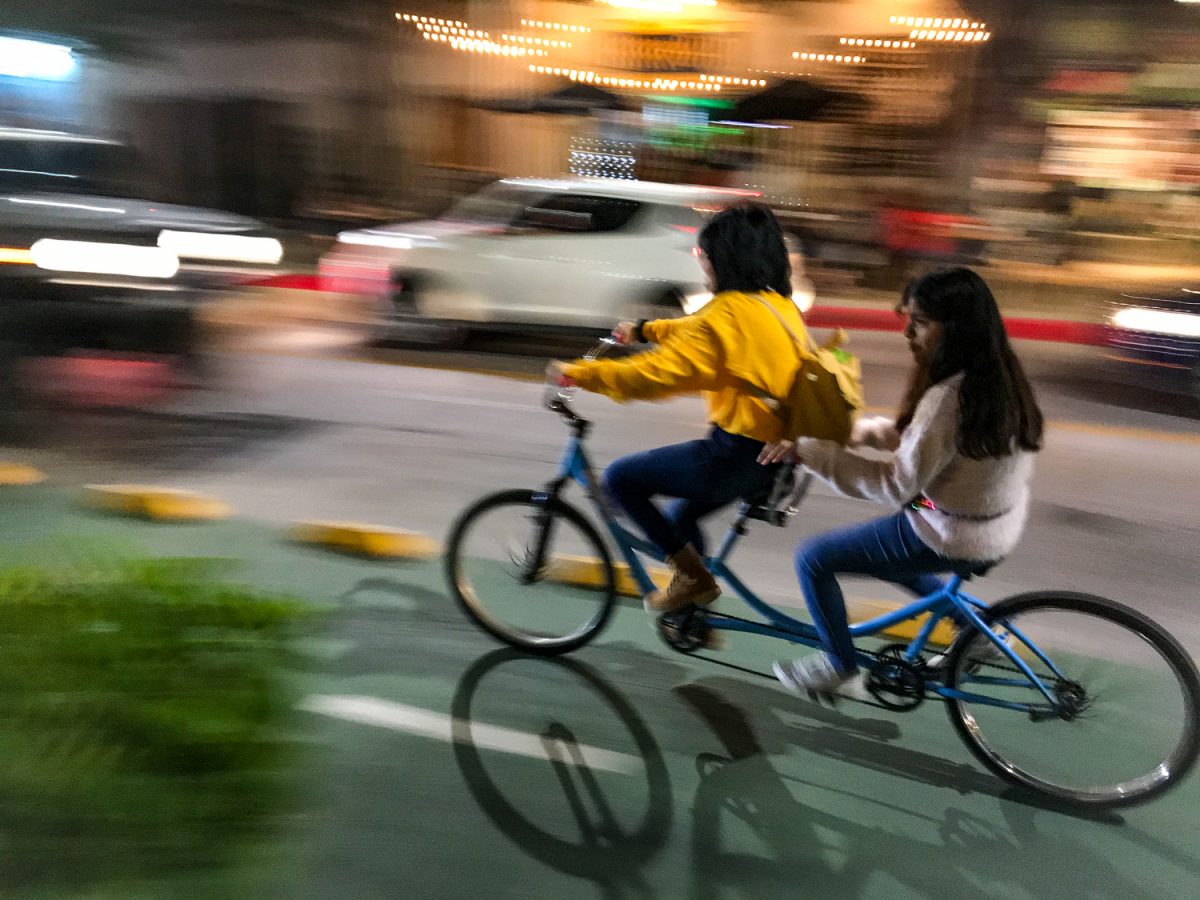
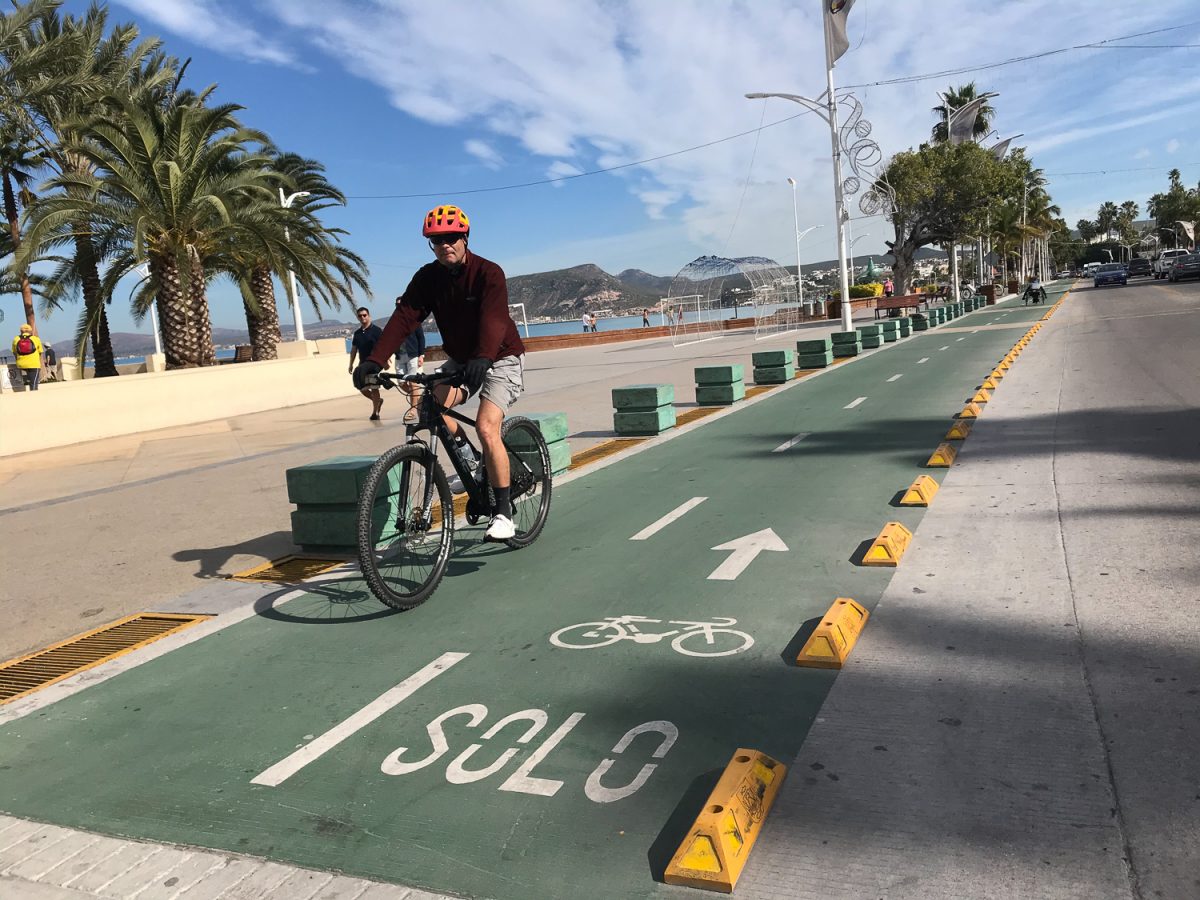
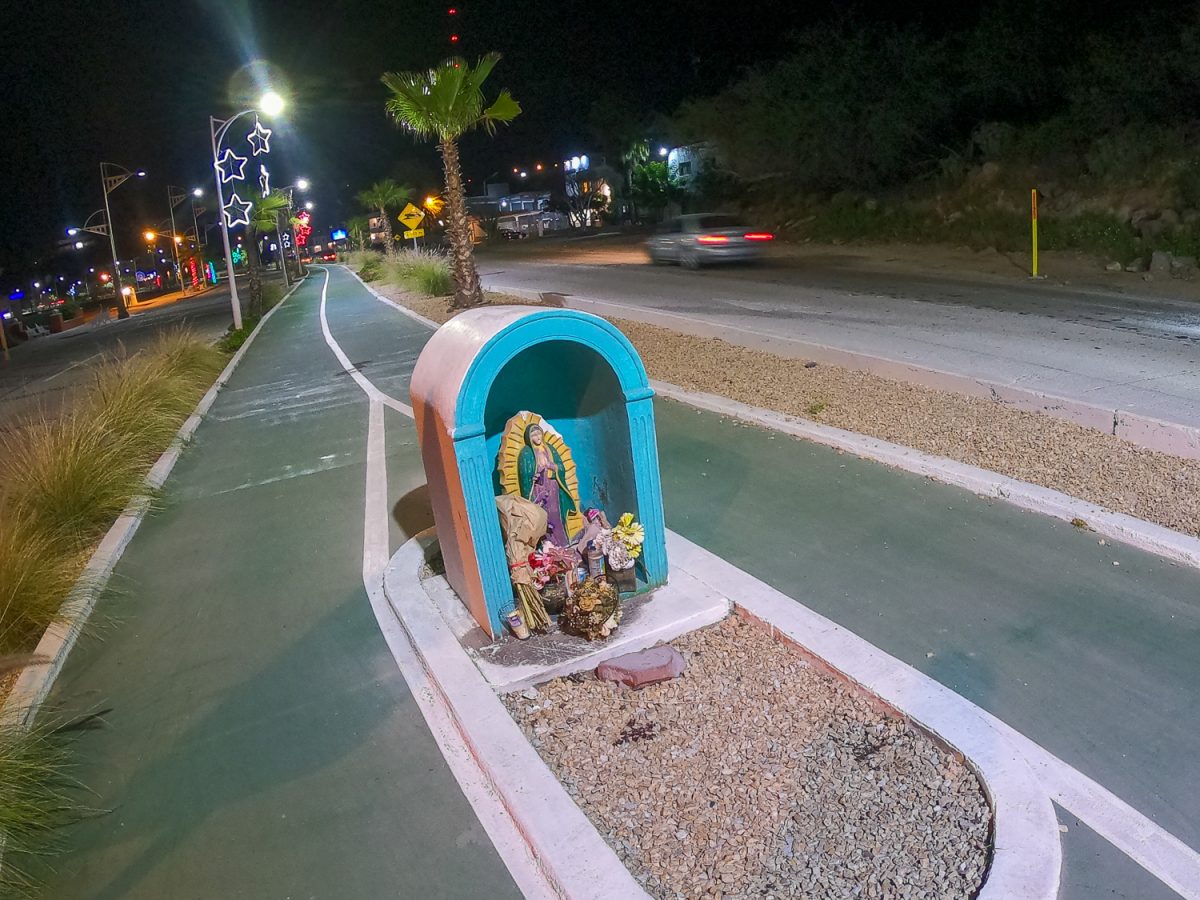
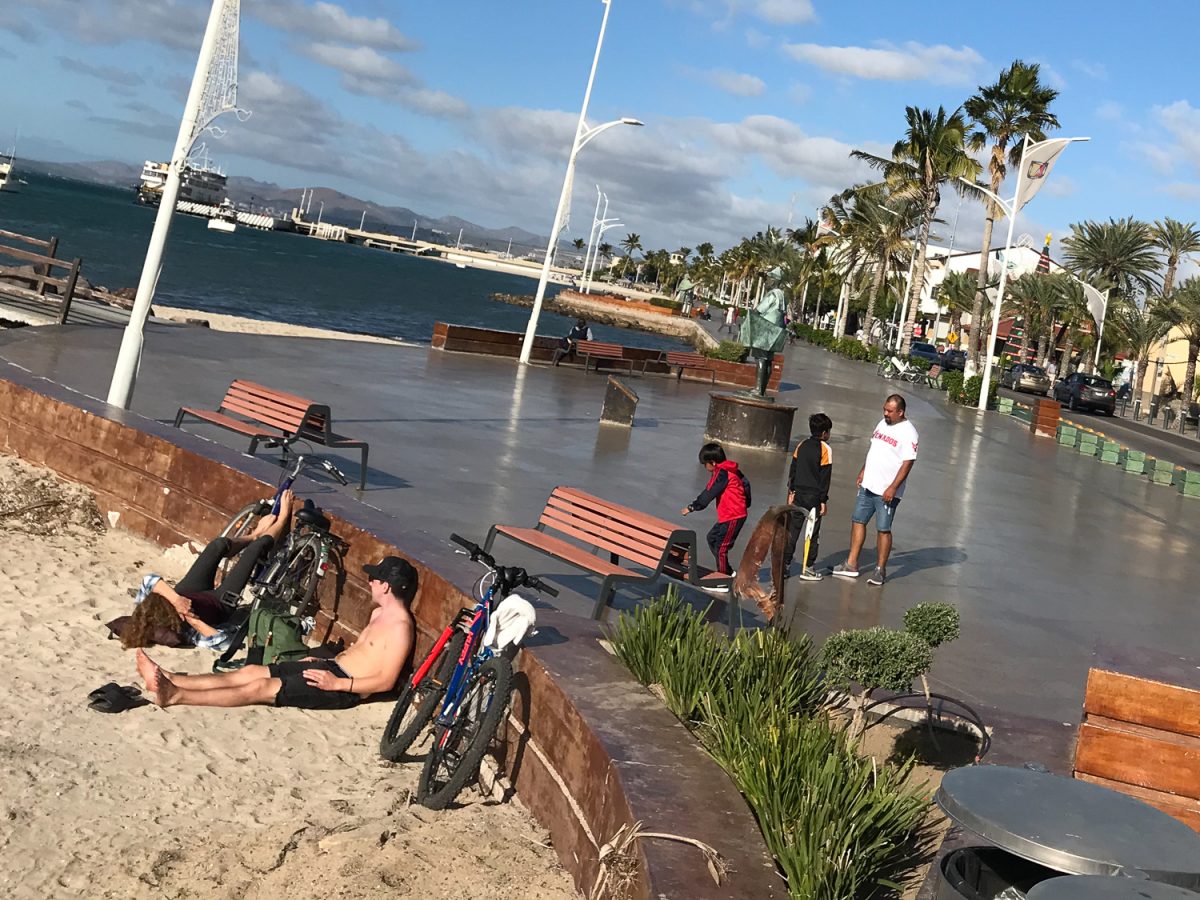
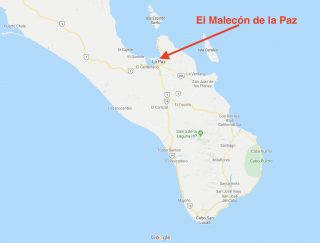
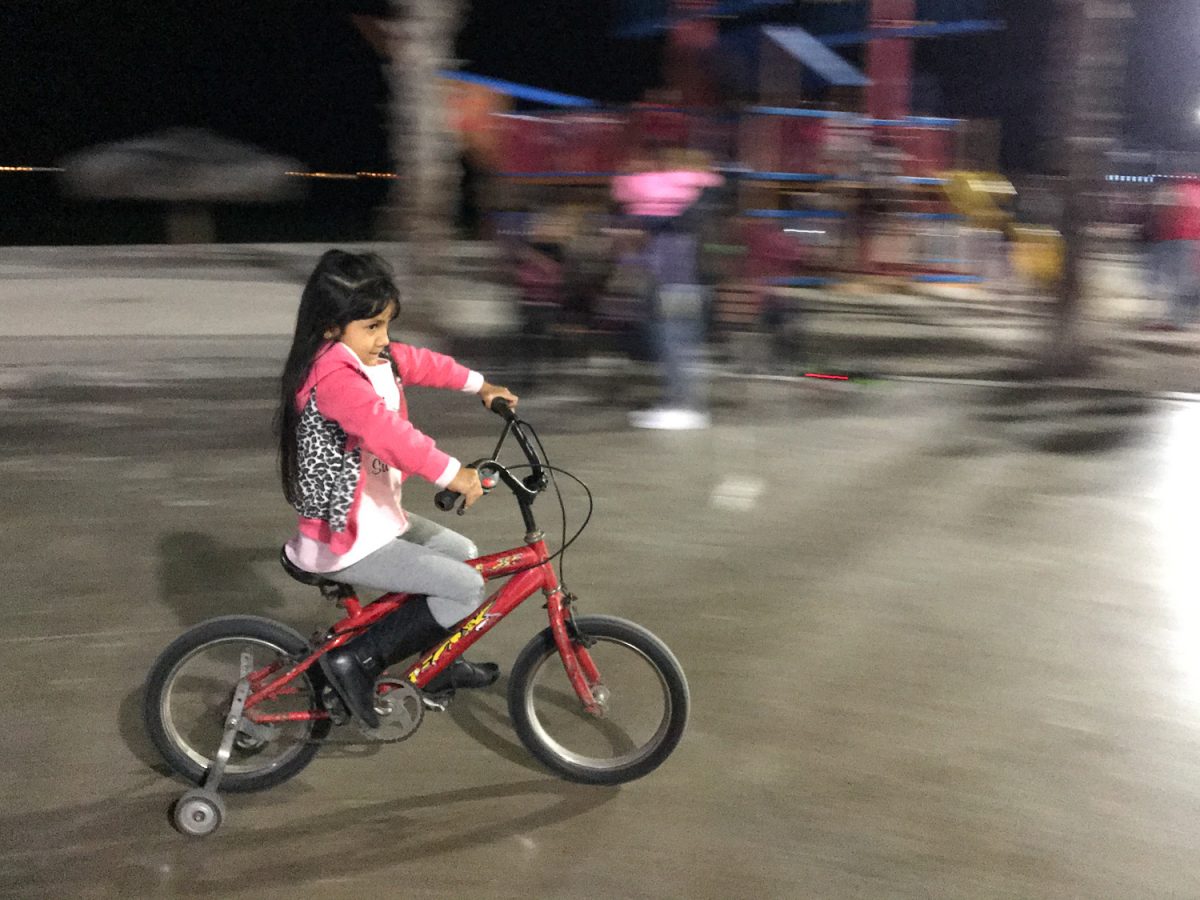
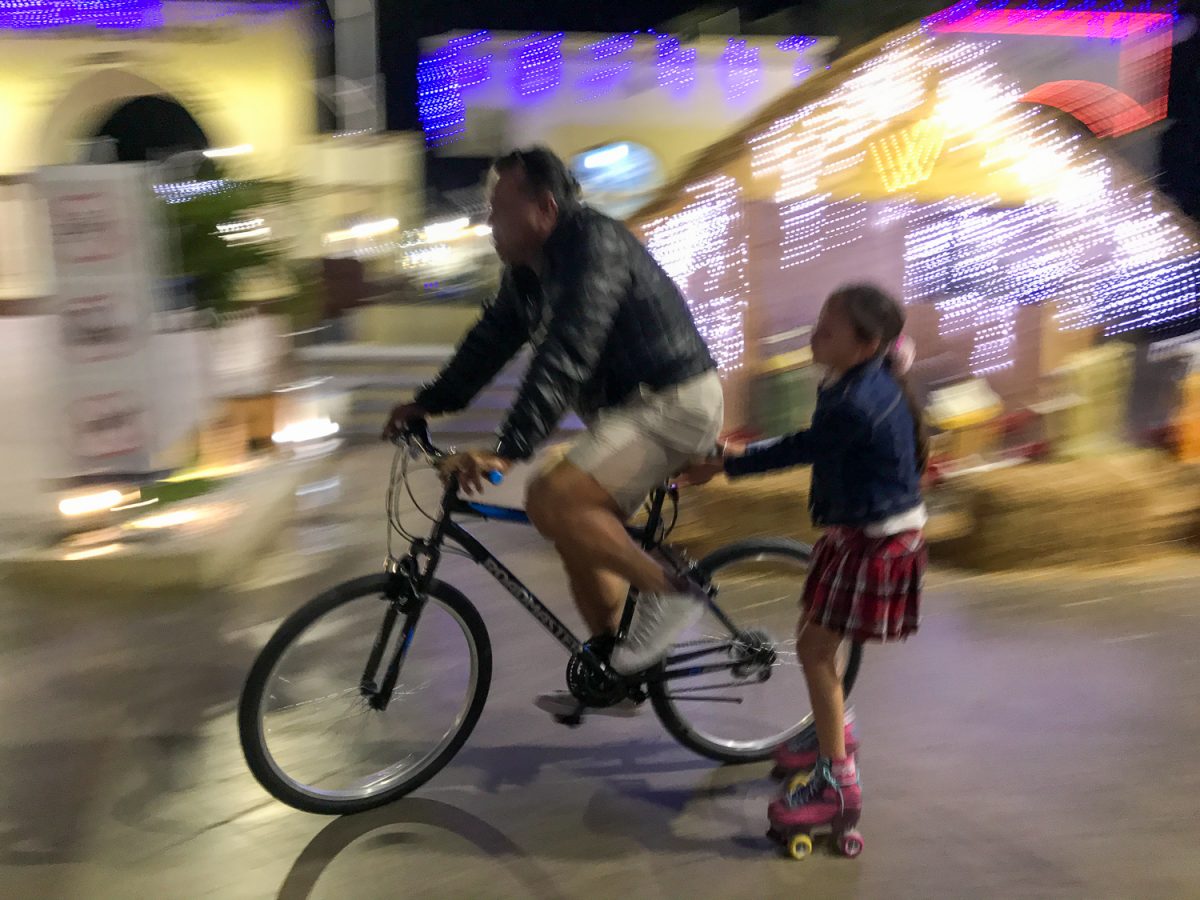
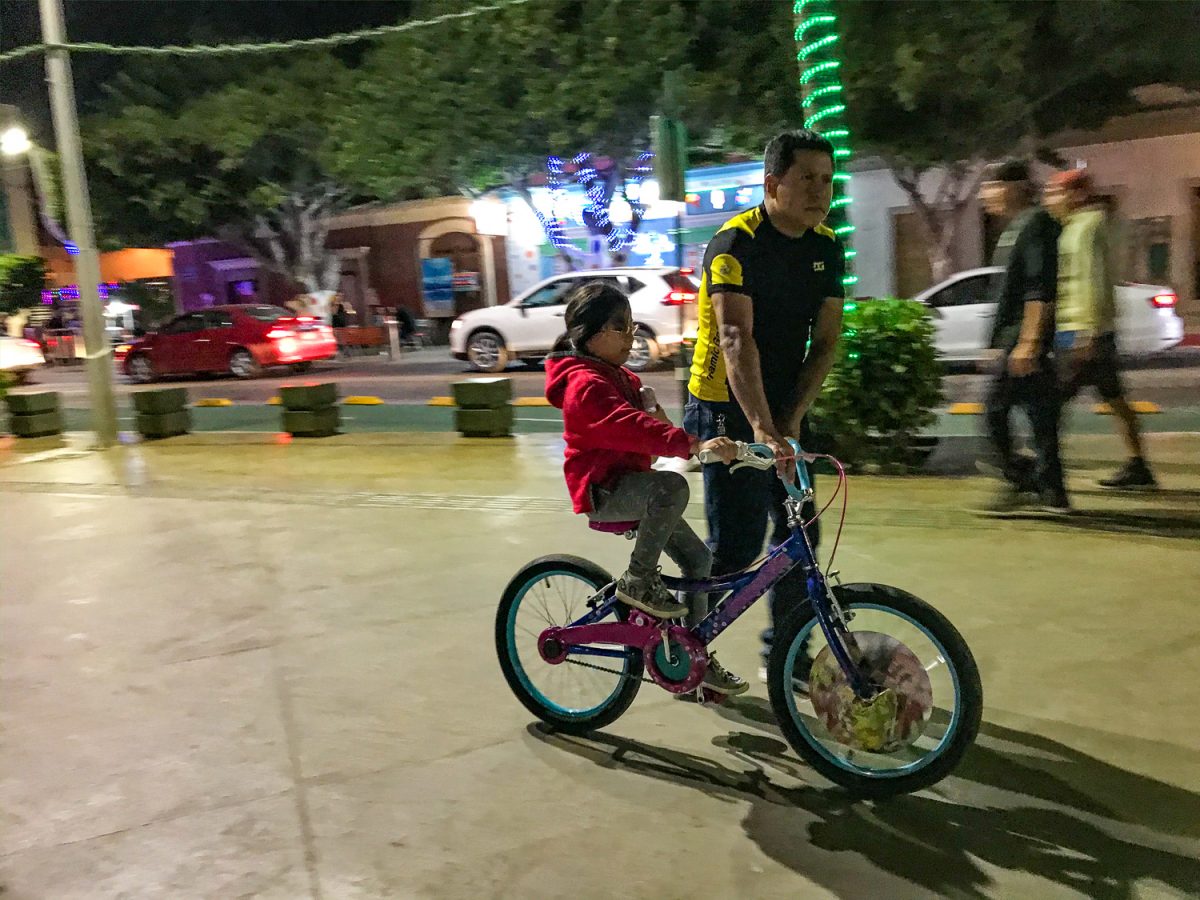
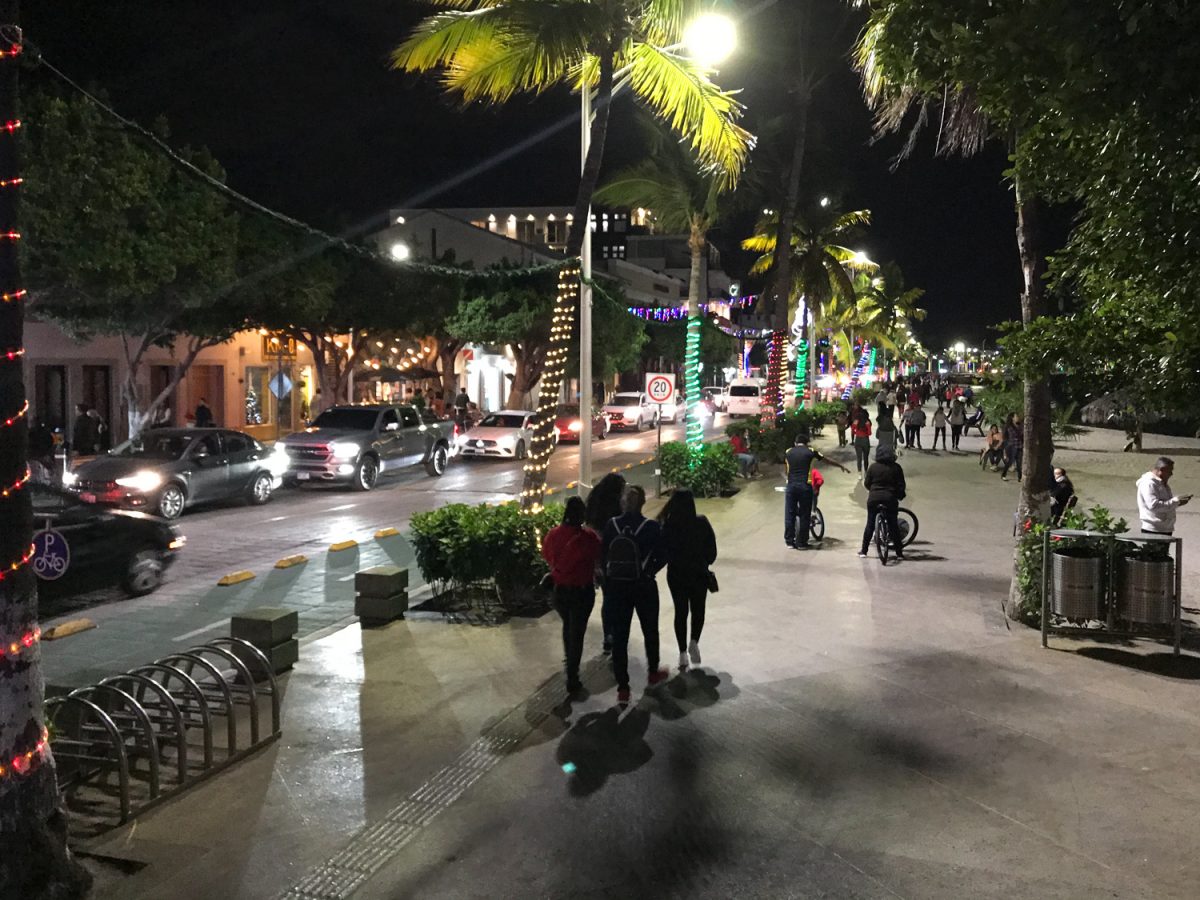








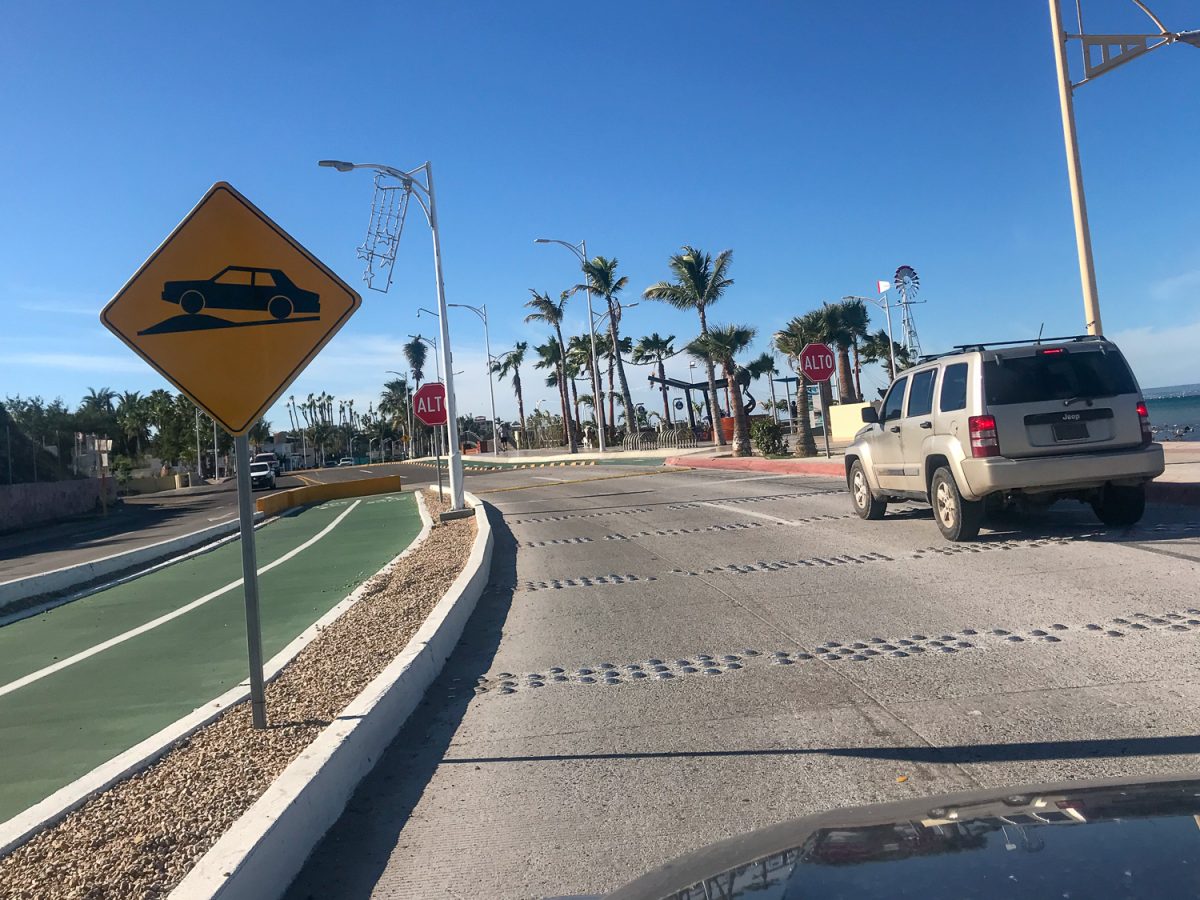
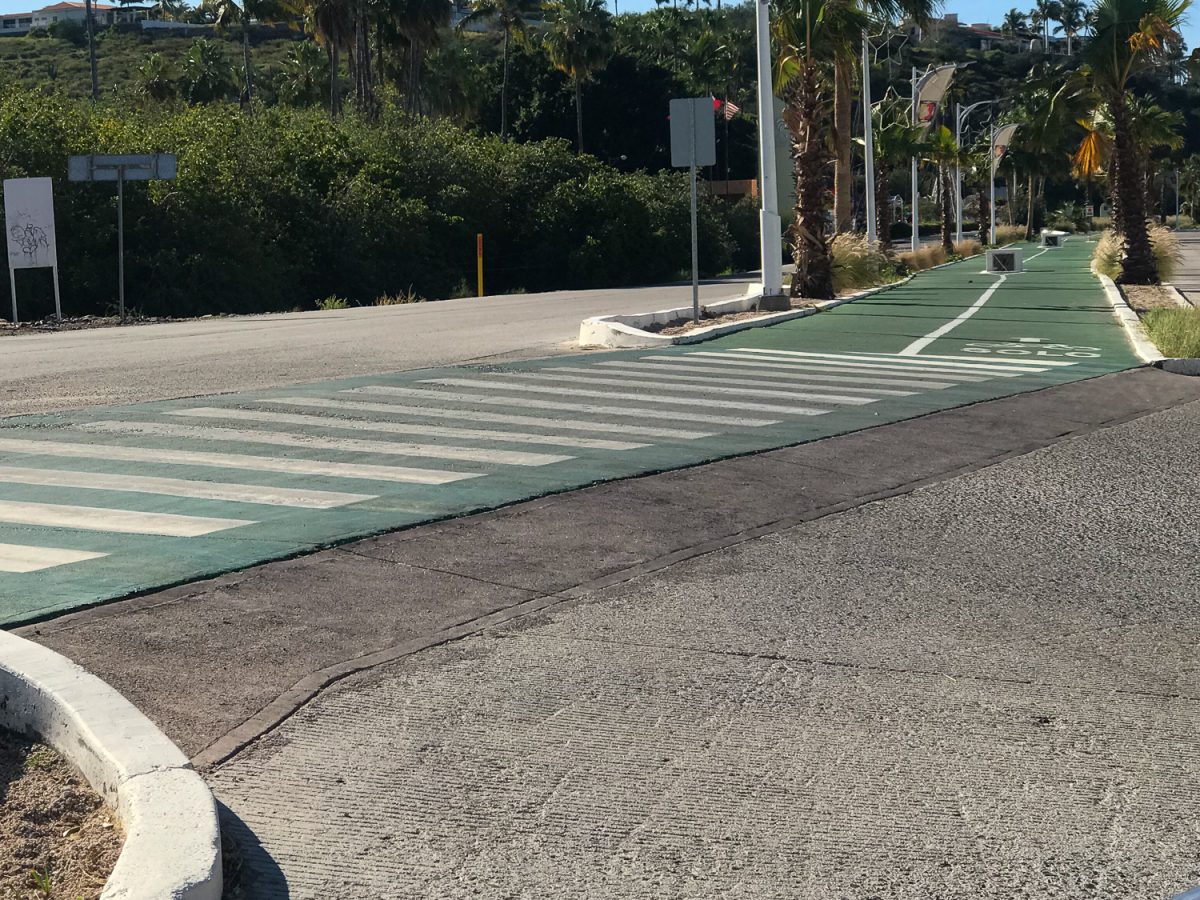
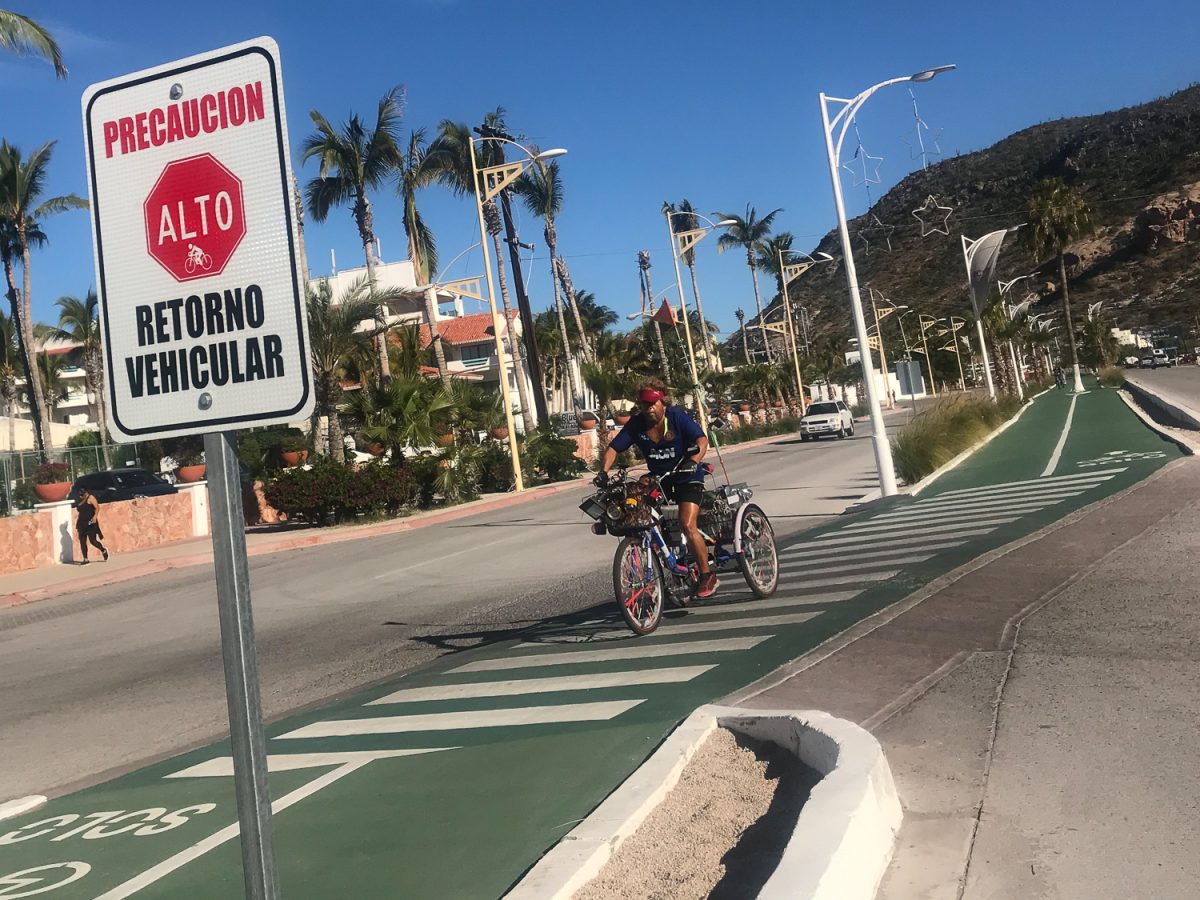

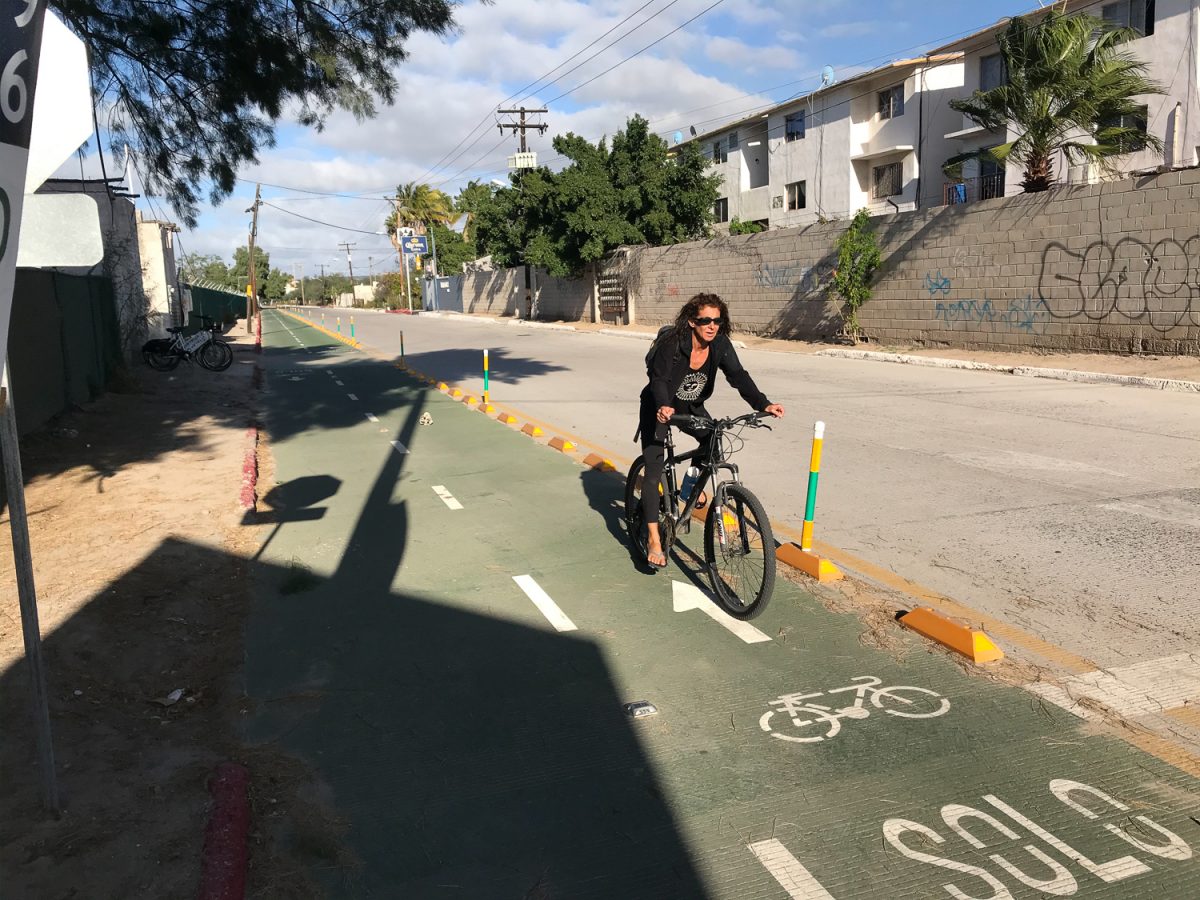
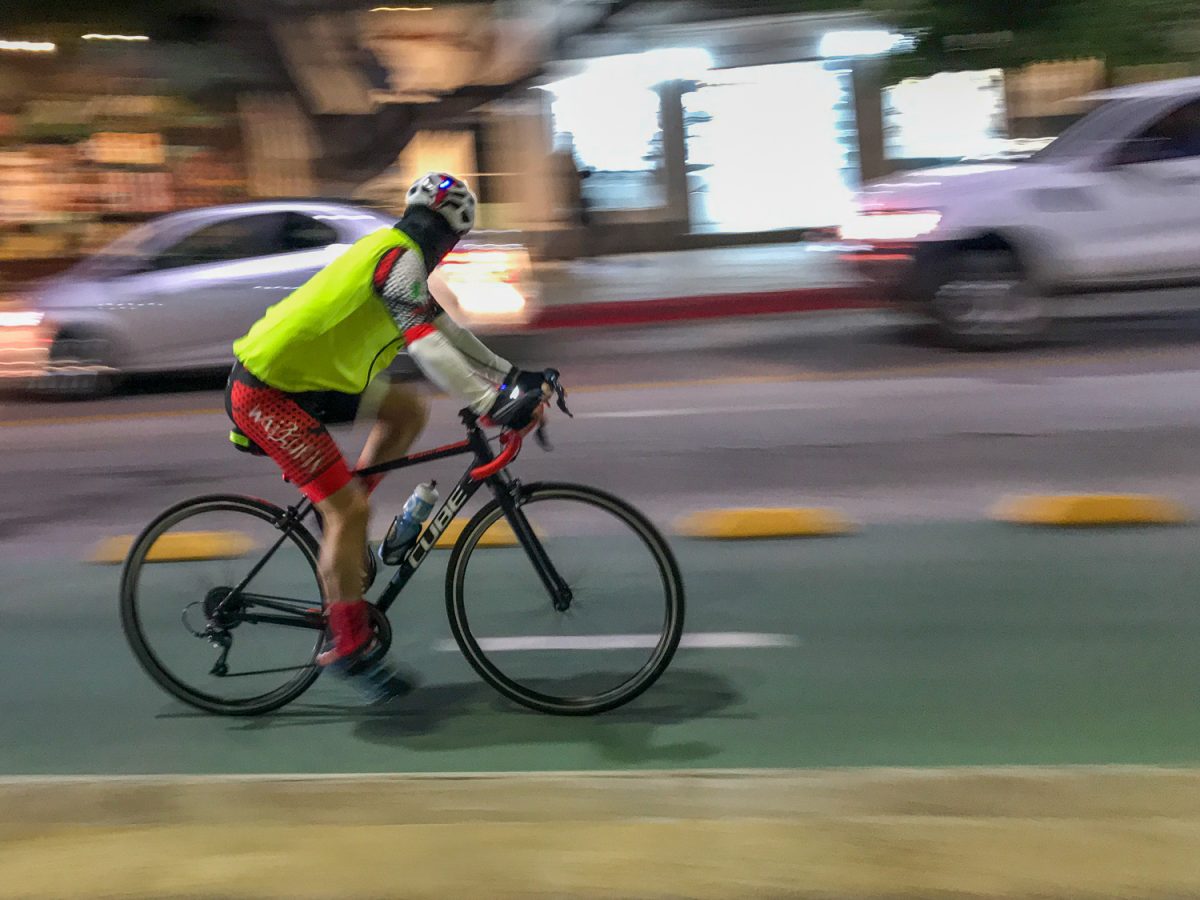

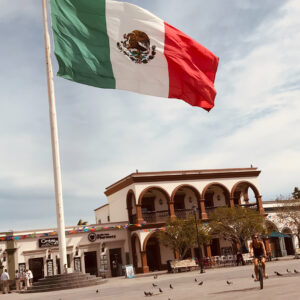
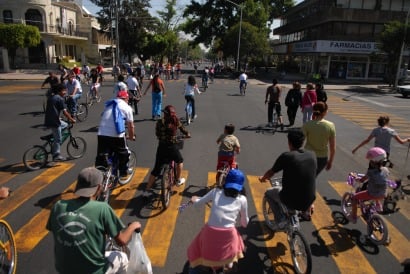

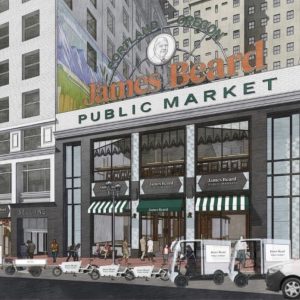
Thanks for reading.
BikePortland has served this community with independent community journalism since 2005. We rely on subscriptions from readers like you to survive. Your financial support is vital in keeping this valuable resource alive and well.
Please subscribe today to strengthen and expand our work.
Baja is the friggin best.
Those speed bumps are called “topas” and they are one of the best things about Mexico, IMO. I wish we had them here.
Close! “Topes”
Did you notice that drivers in La Paz treat all stop signs as idaho stops?
Yes and that’s one reason I love Baja so much. I feel much safer on the roads while driving there than I do here in Oregon. It’s because people drive way more chill and without so much entitlement. I love having no lane lines and having a looser vibe on the roads. One reason our roads are so full of rage and death is because people feel like own certain spaces (“It’s MY lane asshole!”) instead of using roads like a public space — wherein you give and take with others and are considerate of everyone’s space and experience.
And worth noting: While no one in La Paz comes to a complete stop at every stop sign, they (mostly) always do when someone on foot is trying to cross! That’s exactly how the law should work. FWIW I’d be all in favor of Idaho Stop for drivers in the U.S. if the context was different. But I don’t think our drivers can be trusted with that responsibility (see above)
I totally agree with your sentiment. But it is objectively much more dangerous to use the roads in Mexico than in the US. The driver test/license requirement is almost totally ignored, for example, so there are lot of people driving who don’t actually know the rules. The good side is, as you say, the drivers are much calmer. But they also tend to make bad mistakes in cars. The best part about Baja, and perhaps why it’s somewhat more safe, is that there are so few people.
Viva topas!
While I understand your sentiment, many motorists in the US DO NOT know the law, whether they passed the driving ‘test’ or not. IMO, driver’s manual is totally inadequate, as is ‘test’ itself.
I’m much more afraid of hitting a cow at night while driving than being hit by a Mexican driver while biking during the day, but yes, they tend to drive fast and crazy on the rural roads. Looks like they’ve done a ton of work since I was last in La Paz – nice!
I was in Santiago, Chile, a few months ago and I had a similar experience. The bike infrastructure is primitive, and the drivers are not very polite (no yielding for bikes/peds)…but the drivers understand that they are sharing the road with bikes. In large part because there are so many bikes and so few bike lanes. I biked down 8-lane urban streets with other local bikers, just using the right lane. It felt at least as safe as an unprotected bike lane here w/ cars zooming past at 40 mph.
Interesting perspective. I never thought about the concept that by defining certain parts of the roadway as ‘belonging’ to one group, it creates a sense of entitlement/ownership. I realize that I am ‘guilty’ of that sometimes. I see a driver go around a car blocking traffic, by using the bike lane. There was no risk to a cyclist, but he was in ‘my’ space, so my blood pressure goes up.
Yeah, EVERYWHERE I’ve traveled feels safer to be a pedestrian or cyclist. I’d share the road with a chain smoking texting non American driver over a Portlander any day.
BUT. Did you snorkel with sea lions?!?
haha. Hi Gregg. Nope. We didn’t make it to the sea lions on the island because several people in our boat got seasick! But we did have time to swim with whale sharks!
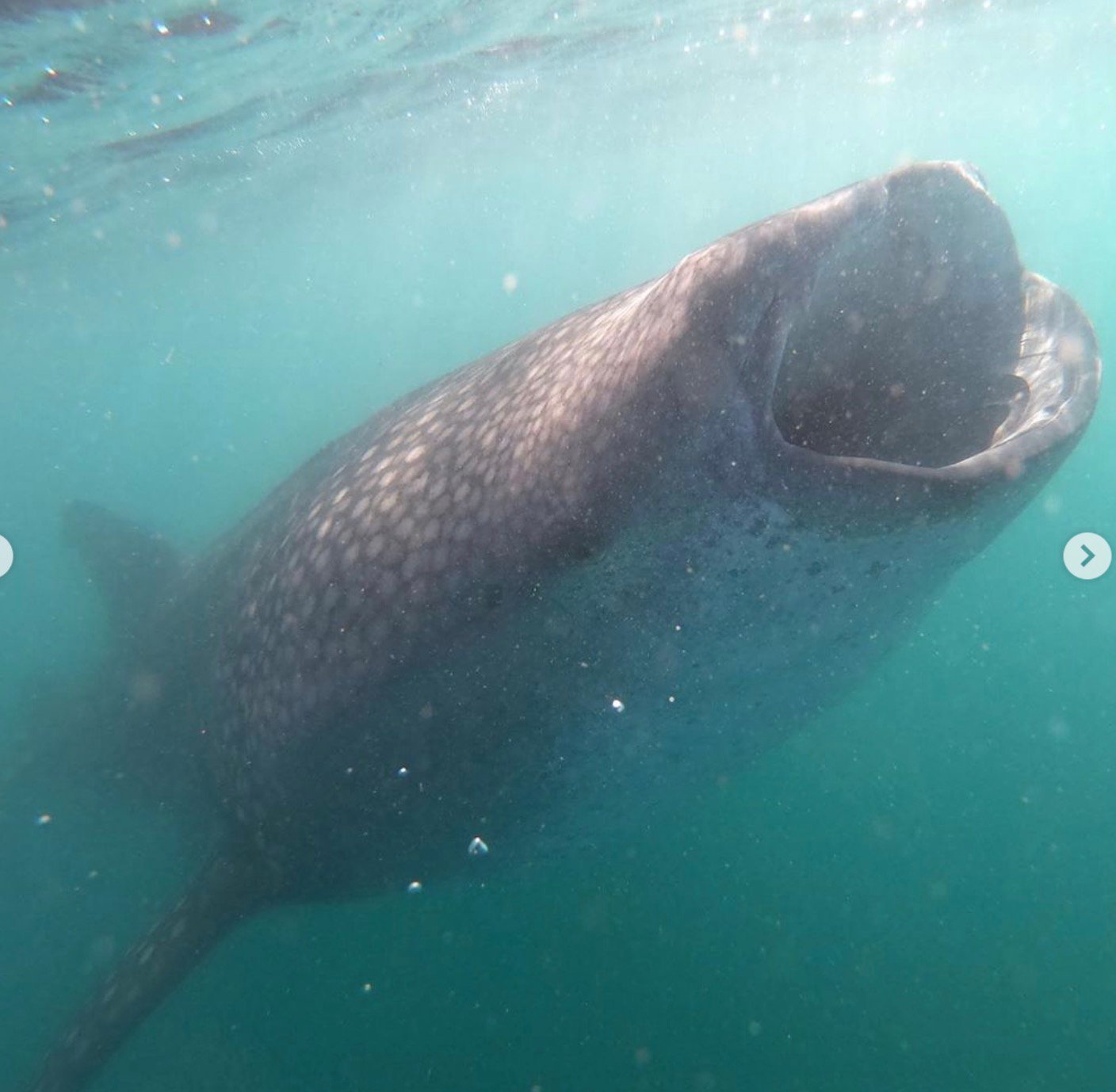 !!
!!
I went snorkeling with the sea lions twenty years ago down there and I found it a bit scary. The sea lions love to play so they swam right at me veering off at the last second. I found it rather unnerving. It was an amazing experience but they definitely freaked me out.
Very cool that you were able to swim with the whale sharks Jonathan!
Those sea lions were a bit intense!! Our guide had us slowly make our way to this little cave where he said they always hang out. One of them came flying out and did this awesome little series of spin moves right 3′ in front of my wife, who did a fast 180 herself and retreated to just scoping out the little fish. We also saw two up on the rocks having a totally epic battle.
Awesome seeing the report and photos! We were there just about a year ago, and had an amazing time. We hit up the malecon almost daily.
I really appreciate this article–the focus on the public space aspect, the analysis of what it does and why it works, and the comparison with Portland’s Waterfront Park.
And it’s so sad–so many of Portland’s public spaces–Waterfront Park, Pioneer Courthouse Square, the Park Blocks, Keller Fountain, Jamison Square…are so often cut off from the surrounding buildings by vehicle traffic.
Also sad that so many people here don’t really know how wonderful urban public spaces can be, because their closest personal experience with them may be Clackamas Town Center or Bridgeport Village.
You forgot to add the official La Paz cycle track video that I filmed and produced with original score from 7 years ago. https://www.youtube.com/watch?v=43KHCAtxyoI
I’ve done an extensive amount of tour cycling in Guatemala, Mexico, the US and Canada, and Mexico is by far the safest of those places to ride. In urban and rural settings, narrow roads with lots of potholes and topes really slow drivers down, and high residential and commercial density along narrow public right-of-ways make streets much more multi-use spaces where road users have to work around each other and be more cautious of each other.
I think about this division of peds/bikes/cars and relation to public space when comparing Portland’s Waterfront Park with the seawall in Vancouver, BC (and the new riverfront park in Vancouver, WA where cars are on the north side of building and businesses, creating pedestrian/riverfront priority). It is so much more inviting to walk & bike when cars feel and are so far away. I really wish there was an interest in doing a complete redesign of Waterfront Park to connect it with downtown, make solid safe AAA (all ages & abilities) bike infrastructure, and add more spaces for all hours recreation/hangout.
Re: the area adjacent to Naito/Waterfront Park — I work at SW 3rd and Washington and my 4-block walk to Waterfront Park takes me by 5 (!) surface parking lots and one or more freeway-style offramps from the Morrison Bridge. Wildly uninviting. I definitely head down to the park less than I would if the walk were nicer.
The correct translation for malecon is “seawall” or “promenade”. “Muelle” is the name for pier. I have a house in La Paz and can vouch for the quality of life there.
It’s not true, stay away! Of course I’m kidding. The malecon in la Paz is family and bike friendly till past 10pm. Drivers in the tourist area go like 15 mph. Island time.
I recently passed on a trip to La Paz because the murder rate is among the highest in the world, would be number 4 on the top-50 list at Wikipedia if it were big enough to include on that list https://www.cheatsheet.com/culture/the-most-dangerous-cities-in-mexico-to-avoid-at-all-costs.html/ I imagine it’s mostly gang-related, but still …
Did you see any signs of non-traffic-related violence or feel unsafe?
That’s a shame Frank! It felt totally safe at all times… especially when the Federal Police pickup trucks went by with dudes holding AK-47s (or something like that).
We heard a lot of scary stories from family too about Mexico and its murders and gangs… but I honestly think much of that narrative from Americans is driven by racism and ignorance. I’ve traveled the world and have learned that America’s ridiculous culture of fear and white supremacy often leads to narratives that marginalize other places and play up the “it’s dangerous oh my god!” stories that are so powerful.
I mean seriously, every summer there are tons of gang shootings and killings in my neighborhood here in Portland. And Oregon averages more than one death every day on our roads. But Mexico is dangerous?! Come on.
On the flip side, I think one reason Baja is still so raw and un-touristed is because many are too afraid to go there.
I can’t speak specifically to Baja, but I’m not sure how you conclude that reports of violence in Mexico are simply “racism” and “white supremacy”. Whether you, as a tourist, are likely to be targeted is a question, but there is no denying that Mexico is suffering hugely from lawlessness. It made you feel safe that the police had to travel in heavily armed groups?
>>> The National Statistics Institute said there were 35,964 murders last year, a 12% increase from 2017. The murder rate rose to 29 per 100,000 inhabitants from 26 the previous year. By comparison, the U.S. murder rate was 5.3 per 100,000 residents for 2017, the latest available data. <<<
And despite having fewer cars, their per-capita death rate from "traffic violence" is almost the same as ours. When normalized on a per-mile basis, their death rate is nearly 4x ours.
https://www.wsj.com/articles/mexicos-murder-rate-hit-record-high-in-2018-11564079972
https://en.wikipedia.org/wiki/List_of_countries_by_traffic-related_death_rate
Hello, Kitty,
I’m not saying that anything about this is “simple”. I’m just saying that in my lived experience, a lot of the stories Americans tell other Americans about places where people of color live are often fueled by subconscious racism and are a byproduct of a perspective based in some part on the idea that white people are more civilized and “other” places are more dangerous. Obviously I am aware that Mexico has very serious problems with lawlessness and murders and other serious problems. Again, I’m the type of person who speaks more from emotion and lived experience than from raw statistics. That’s just how I am. Thanks.
>>> A lot of the stories Americans tell other Americans about places where people of color live are often fueled by subconscious racism and are a byproduct of a perspective based in some part on the idea that white people are more civilized and “other” places are more dangerous <<<
Many places where "people of color" (or, as I prefer to call them, "people") live are more dangerous on an objective level, and my lived experience is that many non-American people, of whatever color, tell similar stories about us (and other places as well).
When traveling, sometimes we are less comfortable in unfamiliar situations and overestimate the danger, and others we are oblivious to real danger because we don't realize what's going on around us.
That's not a judgement — I've experienced both myself. Neither reaction is inherently racist, or even inherently American. It's just part of the human experience of being in unfamiliar environments.
I should probably clarify that I’m not saying that no one you’ve talked to about the dangers of other places was racist; maybe they all were. What I’m saying is that the claim that “people believing other places to be dangerous” is indicative of racism is not correct.
I disagree. I’ve taken three extended trips into the Mexican interior, and lived in-country (Baja and Sonora) for six months. I even wrote a book about it. As you say, you “can’t speak specifically to Baja,” but I can. Especially with regard to White Americans and Mexico (including traveling in Mexico), I hear a great deal of fearmongering nonsense that has racism and ethnocentrism at its heart.
I would advise that you should try going to Mexico then talking with some White Americans about it. You would see the bias and ignorance first-hand, instead of making general pronouncements about the matter on the bike blog. But I don’t think you would do very well in Mexico. So just take it from me: Your ignorance-based opinion is wrong.
Somalia should be safe, though.
It’s possible that people can make rational decisions (even if they are different than yours) about personal safety that are not rooted in racisim or ethnocentrism. That there are parts of Mexico where you felt perfectly safe does not refute that. That you have talked to fearmongering racist white people does not refute that.
I would be hesitant to broadly attribute peoples’ opinions that differ from mine to racism and ignorance. That starts to sound a bit like prejudice itself. I’ve traveled in many places others would find scary, but I would not be quick to judge people for their preferences or presume I knew their reasons for such preferences.
It is awesome to read that someone who come from the “Valhalla” of bike lanes (Portland) writes something so beautiful from my home town.
I currently works for the non-profit who advocate from the very beginning for that bike-lane. you described. You can look for us in social media as BCSicletos.
Greetings!
Great to hear from you Frank. Maybe next time I go it will be officially for work and I can learn more and share more about your story. I’d love to have an excuse to return soon. Keep in touch and keep working to extend that path north! Imagine one day riding a protected path all the way to Balandra Beach!
Frank, you’re doing great work. Thank you and keep it up!
Part of the Malecón “scene” even though technically across the street, is the skate park. No fences no rules, but once again like the actual Malecón friendly and civil. There are the teen young adult users tearing it up and the small kids on their new Christmas boards that have their parents walking them through the park while holding their hands. Right now there is a book fair setup on the perimeter of the park, no fences separating the two, and no hassles.
La Paz in Spanish, The Peace…
Is nobody going to shame Jonathan for his climate footprint? /s
Clearly, Greta would not approve. I’m not so sure why white supremacy had to be brung up in this story either.
I love La Paz and I felt quite safe there. Though La Paz has made some lists of cities with a lot of homicides, these are related to the drug trade. Since I did not join a cartel, I felt pretty safe. The question for visitors from the USA is whether the city is safe for tourists. The US department of State has a list of US citizens that die in every country of the world, the location of the death, and the cause. According to that website, in 2018, 12 Americans died in the state of Baja California Sur, including 6 from drowning, 2 from car accidents, 2 from other accidents, one was struck by a car while walking, and one died of suicide. None of these deaths happened in La Paz. There were no homicides of Americans in Baja California Sur and the state is visited by over a million Americans per year. I am not bringing this detail to this discussion to be morbid, but just to put our FEAR into perspective. Apparently, the main thing to be scared of in Baja California Sur is swimming. Here is the website that the state department keeps of American deaths overseas: https://travel.state.gov/content/travel/en/international-travel/while-abroad/death-abroad1/death-statistics.html . This article has a similar take but also includes the the state of Baja Califormia to the north, which includes Tijuana: http://www.bajainsider.com/article/cause-death-us-citizens-mexico-2017 . It seems it really is safer in Baja California Sur for Americans than even a relatively safe state like Oregon.
We all know fear is irrational, even in those unpolluted by racist beliefs.
Great to see such data – thanks.
Portland’s riverfront has two big strikes against it…one, the wall keeps you away from the River with a few exceptions, and two, the opposite side of the River has a sadly misplaced freeway. A river cuts Frankfurt am Main in Germany in two, but the side opposite the “Innenstadt” has a string of a dozen museums! not a dozen lanes of high speed traffic. Time to decommission.
Time to build museums!
Basically, Mexican drivers have a lot less entitlement than US drivers.
I’d be happy to get your opinion on the customers of the Mexican bakery on Vancouver who park in the bike lane.
No sense of entitlement there!
Because all the people who frequent the Mexican bakery are Mexican? Or Mexican-American? See, you’re so racist that you don’t even know when you’re doing it.
The window stickers of the particular states is a good indicator, no?
Now, can you actually PROVE I am incorrect? Nope.
No, and Yes. Your logic is poor and your thinking is racist.
And let me just add: I’ve lived near the bakery for years and seen enough to confirm my belief.
So just take it from me: Your ignorance-based opinion about who shops there is wrong.
**comment deleted by moderator** The Last Voyageur, please be more respectful and tactful in your comments. Thanks.
**comment deleted by moderator**
This is a personal attack. Please stop it.
It’s almost like you are in favor of a 25% off sale on all things black on MLK day.
It’s almost like you put words in other people’s mouths and create fictional actions they do.
So? Aren’t you just so proud that you made your pedantic point?
I very much enjoyed reading your article about La Paz. It is nice to know a lot of people find it a nice, safe, place to visit and live there.
I am from La Paz, at the present time I live in La Paz, and a few years ago I was living in beautiful Damascus, east of Portland. I just wanted to say Hi and thank you for sharing your experiences.